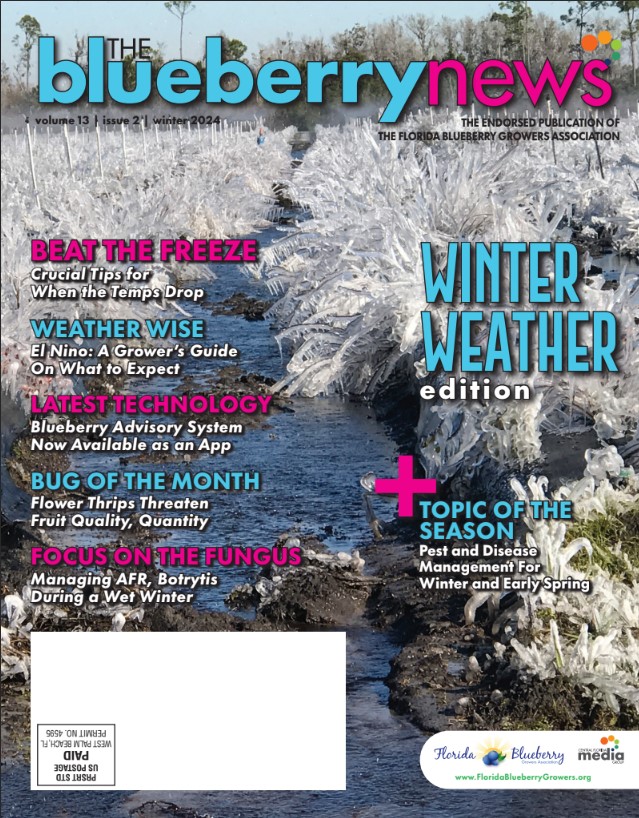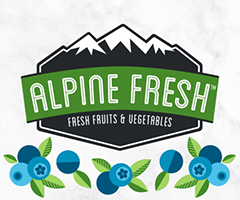Management Practices for Weeds on Your Blueberry Operation
The most important method of weed control is preventing current weeds in your field from developing seeds. Some common weed species in blueberry can produce more than 100,000 seeds per plant and can survive in the soil profile for 5 to 15 years. Preemergence herbicides can provide residual weed control for many weeks or months. But the frequent summer rainfall events may move the preemergence herbicide below the area of greatest control. So blueberry growers will rely on postemergence herbicides when they experience a reduction in weed control from preemergence herbicides.
Two categories of postemergence herbicides are selective and nonselective. Selective postemergence herbicides control certain weed species and not others due to uptake, metabolism, and structure of the enzyme’s site of action. Nonselective postemergence herbicides control all the weed species. This article provides a discussion of postemergence herbicides and includes the name of the most common trade name for an active ingredient, but other formulations for an active ingredient are available.
Selective postemergence herbicides
Carfentrazone (Aim) controls broadleaf weeds and may cause a little browning around the edges of grass weeds, but will not control grass weeds. Carfentrazone is included in many products that are registered for homeowners lawn herbicides.
Halosulfuron (Sandea) is one of the best options for postemergence control of nutsedge, broadleaf, and grass weeds. Broadleaf weeds that are controlled are ragweed parthenium, pigweed species, and wild radish. Halsoulfuron also provide preemergence weed control. Discussions with growers conclude that ‘Prima Donna’, ‘Scintilla’, ‘Springhigh’ are more susceptible to crop injury than other cultivars, ‘Emerald’ and ‘Jewel’. Use halosulfuron on a small area if a cultivar is not listed here.
Clethodim (Poast), fluazifop (Fusilade), and sethoxydim (Select Max) are herbicides that control grass weeds only. During the summer, all of these herbicides can be used, but when berries are present in the spring selection should be based on the preharvest interval of each formulation. The preharvest interval can vary by 1 to 21 days for each formulation. The Fusilade label has been changed to include bearing plants so now all these can be used on bearing and nonbearing bushes.
Nonselective postemergence herbicides
Glyphosate (Roundup) translocates through the plants, which can be problematic because it can be absorbed by the blueberry bush and translocated to the growing tips and cause injury. However, translocation is important for the control of perennial weeds such as dogfennel and nutsedge.
Paraquat (Gramoxone Inteon) provides control of broadleaf and grass weeds. New regulations for paraquat are covered in another article. Possible alternatives with similar weed control and use patterns are diquat (Reglone Desiccant), glufosinate (Rely), pelargonic acid (Scythe). These herbicides do not translocate so injury to blueberry bushes is limited to the lower leaves that are sprayed with the herbicide. Perennial weeds will have the tops removed, but the below-ground structures will survive and regrowth will occur.
Organic herbicides
All organic herbicides registered in blueberries are nonselective and only control the portion of the plant that is sprayed by the herbicide. Many of the herbicides remove the outer layer of the leaf cuticle layer resulting in water loss and death or remove the cell membrane. During the summer, the weeds will have a thicker cuticle so multiple applications may be needed. Organic herbicides include ammonium nonanoate (Axxe), caprylic acid + capric acid (Suppress), citric acid, and eugenol (Weed Slayer)
Improving control
Factors that can improve the efficacy of postemergence include: proper identification of the weed, inclusion of a surfactant (nonionic, crop oil, fertilizer) according to the label, application when weeds are small and succulent to improve uptake, complete coverage of the weed, and observing the restriction before the next rain or irrigation event.
Nonchemical
Mowing weeds can be effective, however, if the plants are developing seeds then use a bag or blow the seeds away from the crop row. Weeds can be hand remove or hoed, but for perennial weeds dig the underground structures to prevent regrowth.





